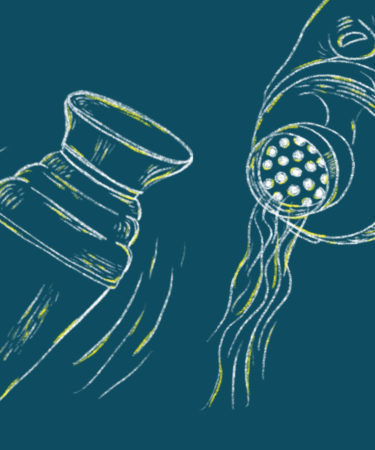The hypnotic click-clacking of ice inside a vigorously moving cocktail shaker is as sure a sound as any that a refreshing drink is on its way. But there’s more to the process than first meets the eye (or ear).
From the amount of time the drink should be shaken, to the type of cocktail shaker used — and even the ice inside it — a number of factors subtly impact the final drink. Here is everything you need to know to master the technique and improve your shaken cocktails.
LEVEL 1: BASICS
Why shake cocktails?
There are three main reasons for shaking cocktails. The first two, chilling and combining the ingredients, can also be achieved by stirring. But the third, aerating the mixture, can only occur through shaking. (Dilution, an oft-cited aim of shaking, is actually more of a side effect rather than a desired outcome.)
Aeration, therefore, is the most crucial aspect of shaking — and it’s likely the least understood. By working air into the ingredients, shaking creates a more consistent, velvety texture. Aeration also impacts the drink’s flavor, and is an effective way of subtly reducing the bitterness of the ingredients and dialing up the perceived sweetness ever so slightly.
Which cocktails should be shaken?
As a rule of thumb, any cocktail that contains fresh ingredients, such as citrus juice, egg white, or cream, should be shaken. There are, of course, exceptions to this rule, but these ingredients typically require the added force from shaking and the addition of air to fully incorporate.
LEVEL 2: INTERMEDIATE
How long should I shake?
Generally speaking, 30 seconds of vigorous motion is enough to chill and aerate any cocktail. But for those looking to hone their shaking skills, there are other, more nuanced factors to consider.
If it’s a spirit-driven cocktail, with a clean, aromatic flavor profile, longer periods of shaking are actually not optimal. Take a Sidecar, for example: This drink contains just Cognac (a complex and aged spirit), triple sec, and freshly squeezed lemon juice. The cocktail is at its best when the ingredients can shine, and therefore with as little dilution as possible and served fairly cold, but not ice-cold.
Daiquiris and Margaritas, by comparison, contain simpler base spirits (white rum and blanco tequila, respectively). The desired character of these cocktails is a lighter and more refreshing flavor profile, so both benefit from slightly longer periods of shaking and a lower serving temperature.
The differences are nuanced, but they’re what separates a good cocktail from a great one.
What type of cocktail shaker should I use?
There are two common types of cocktail shaker: the two-piece Boston shaker and the three-piece Cobbler. Both are more than adequate for shaking any drink, but once again, each has its own subtle advantages and drawbacks.
The overall area inside the Boston shaker is greater, which allows for better aeration when mixing drinks. Using this shaker may require longer time to chill the cocktail, however, as the surface area of the liquid that’s in contact with the ice is lower at any given time.
The Cobbler, on the other hand, is more compact, meaning a faster chilling time but reduced aeration. This shaker also requires a more vigorous shaking technique to work the drink around its more compact space.
LEVEL 3: ADVANCED
What is a dry-shake and when should I use it?
The dry-shake technique is commonly used to shake cocktails that include egg whites. The two-part process sees the ingredients first vigorously shaken without ice, creating a white, velvety foam, before ice is then added and the drink is shaken for a second time to bring it down to serving temperature.
A fairly recent innovation has seen some bartenders adopt a “reverse” dry-shake. This technique first chills the ingredients over ice before the cubes are discarded and the drink is shaken a second time to create its signature foam.
While not everyone in the industry agrees on the merits of the new technique, some bartenders say that the reverse dry-shake can result in a more pronounced foam, and a greater separation between the texture of the final liquid and the meringue. The traditional dry-shake, meanwhile, creates a drink with a more consistent texture throughout, with some trade-off on the size and fluffiness of the foam head.
Which size of ice should I use when shaking cocktails?
Varying the size of ice used in shaken cocktails can impact everything from the time it takes to chill the drink to the aeration and amount of dilution it receives.
Larger, hand-cut ice cubes are better suited for drinks where dilution and aeration are not the main focus — so spirit-forward cocktails that include small quantities of fresh citrus. Smaller ice cubes help increase aeration, but present the risk of over-dilution if the drink is shaken for too long. To combat this, some bars take their machine-made cubes and transfer them to the freezer to chill them down even further and make them stronger. Home bartenders can replicate this by removing cubes from a tray and transferring them to a sealed ziplock bag. (The sealed bag stops the ice from absorbing any aromas that may be present in the freezer.)
